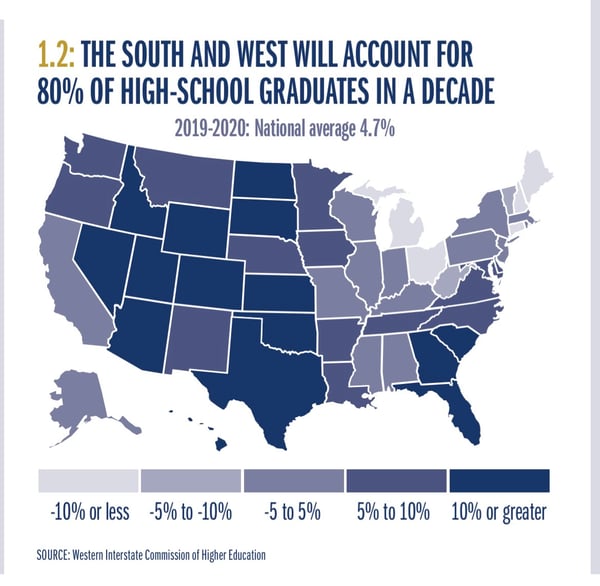Back in 2017, I made up what I thought would be a valuable role on college campuses. Someone in charge of brand experience, a role that would connect marketing and communications with the day-to-day touchpoints and experiences of prospects, parents, current students, alumni, and faculty and staff. Today, these roles are beginning to take shape at a few institutions. This is a great evolution in higher education, and there are reasons to be hopeful this will take hold. Just look at the growth of marketers in cabinet-level positions over the last ten years, and you can see the path to campus acceptance of brand experience both as a role and an idea. While there are plenty of things that slow marketing progress down on college campuses, in this case, there is no more significant hurdle than silos.
We all know that decentralizing marketing strategies and budgets leads to disconnected brand experiences, yet it continues to happen with remarkable consistency on most campuses. How often does this scenario happen on your campus?
- Enrollment hires a consultant to review their communications flow & paid media spend
- Academic deans go rogue in promoting their graduate programs
- Advancement is pushing out a new comms strategy to boost alumni engagement & fundraising
- Student affairs is constantly giving updates for current students (and their parents) based on the priorities of that day
Sound familiar? It's obvious that these competing priorities don't cause consistency or collaboration; they cause competition. To say nothing of inefficiencies in an industry known for its constraints on resources.
So, where do we start? Last year Gartner reported that 25% of Fortune 500 companies would consolidate sales, marketing, and customer experience into a singular department by 2023. This has interesting implications for higher education and might be the linchpin to breaking down some of the silos. With a steep decline in graduating high school students coming, the pressure to hit tuition revenue goals comes from one of three places: new geographies, new audiences, or improving your student retention. A good strategy should incorporate a mix of all three, but the first two are increasingly problematic. Let's get into that for a minute.
With a steep decline in graduating high school students coming, the pressure to hit tuition revenue goals comes from one of three places: new geographies, new audiences, or improving your student retention.A good strategy should incorporate a mix of all three, but the first two are increasingly problematic.
Over the last few years, as we've built new marketing and enrollment strategies with clients, the one thing that stands out is heavily tuition-dependent schools are hoping to target the same geographies. A few days ago, a friend shared this stat stating that 80% of high school graduates will be from the West or the South. The targeting will only get more competitive in years to come.
As for new audiences, there are a few critical considerations for how schools choose to define a new audience including students' interests, program delivery (e.g., in-person, hybrid, online, etc.), and how an institution's offering is uniquely valuable for these new audiences. The development of new audiences and programs has been—and will continue to be—years in the making. Coupled with the fact that the effort to measure program demand and/or find new markets and audiences is often decentralized, it's easy to see why this effort typically builds more silos than it takes down.
Shifting the focus to retention and customer experience, rather than recruitment of new audiences or in new markets, has significant implications on budget allocations. Those shifts will take time, but moves can be made in the short term. This is where someone in charge of brand experience can play a vital role. Connecting even a small number of touchpoints between enrollment, marketing, and student affairs can go a long way in building trust and momentum.
—
Matt is the VP of Strategy at SimpsonScarborough. He's basically a non-fiction version of Ted Lasso and one of the leading experts in higher education brand strategy anywhere in the country. He's played a key leadership role in SimpScar's evolution into a full-service, integrated agency but is likely more proud of the internal culture that's been cultivated in the process. Matt earned his B.S. in Marketing from Auburn University and is in the process of relocating from Greenville SC to Columbus OH with his wife and their two daughters. Learn more about Matt and the rest of our team here.












